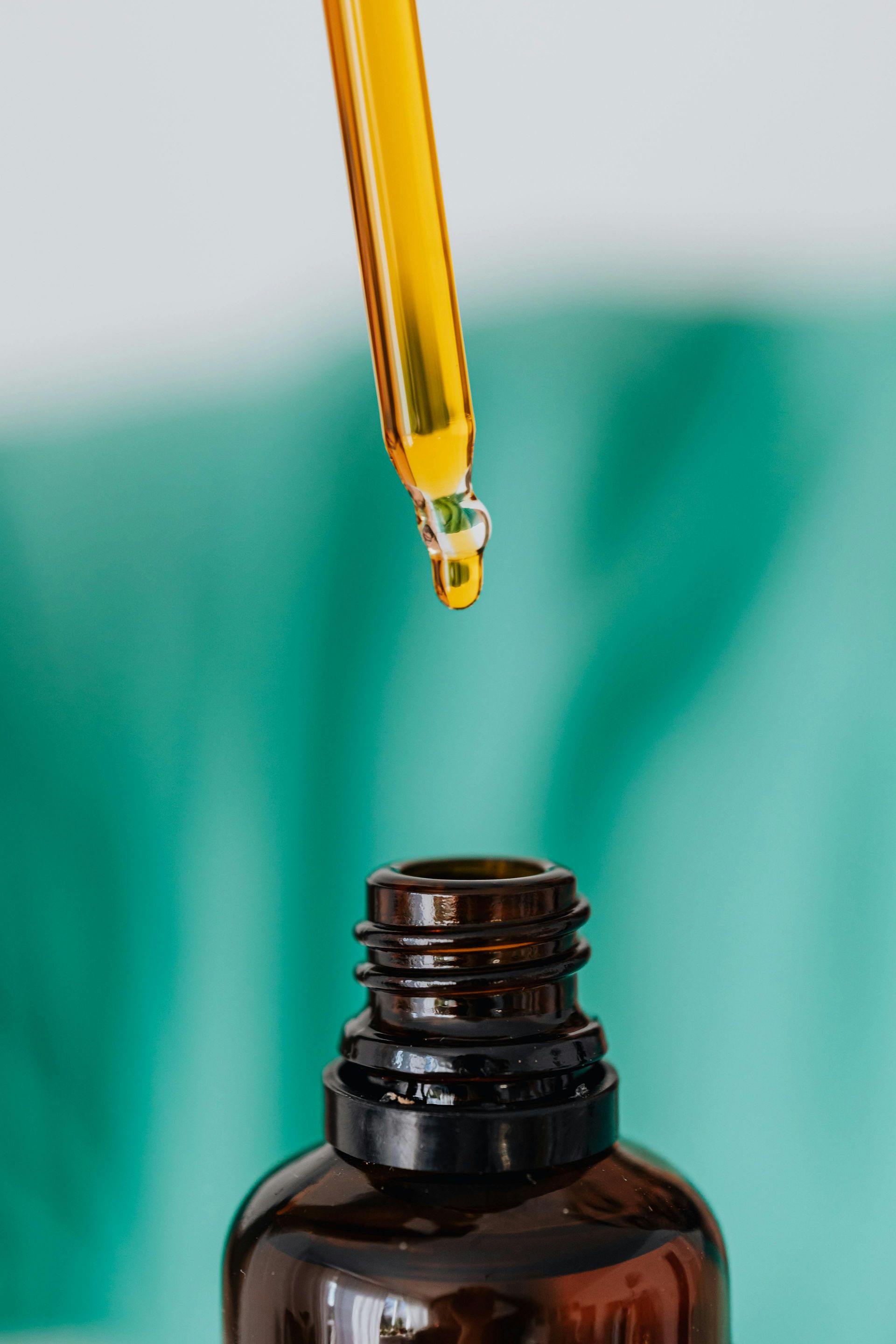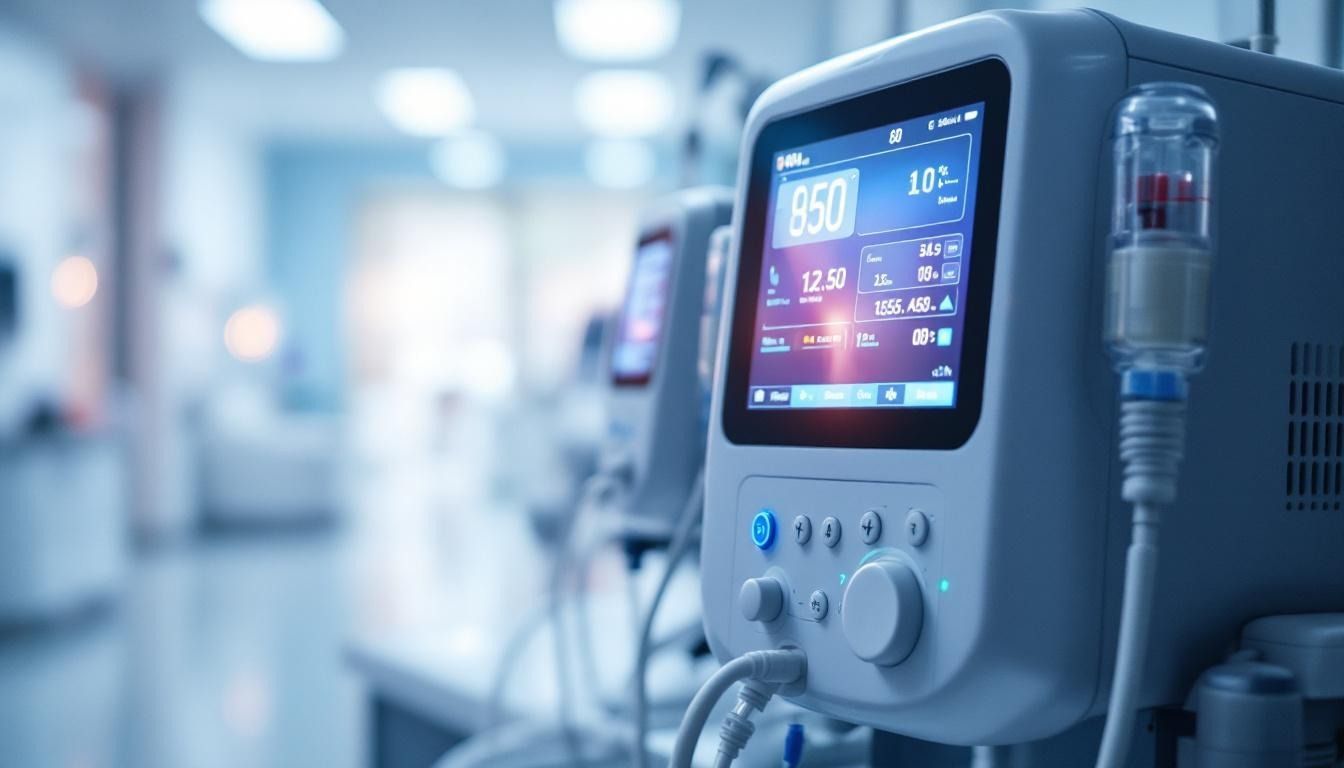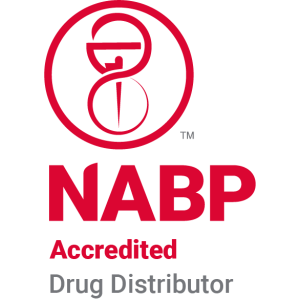How to Optimize Fat Emulsions in TPN for Better Patient Outcomes
Introduction to Lipid Optimization in TPN
Optimizing fat emulsions in total parenteral nutrition (TPN) is crucial for improving clinical outcomes, especially in critically ill and postoperative patients. As research advances, understanding the types of lipid solutions, their biological effects, and appropriate administration strategies becomes vital for clinicians seeking to enhance patient recovery and reduce complications. This article explores current best practices, emerging research, and innovative approaches to lipid emulsion formulation in TPN.
Types of Lipid Solutions in TPN
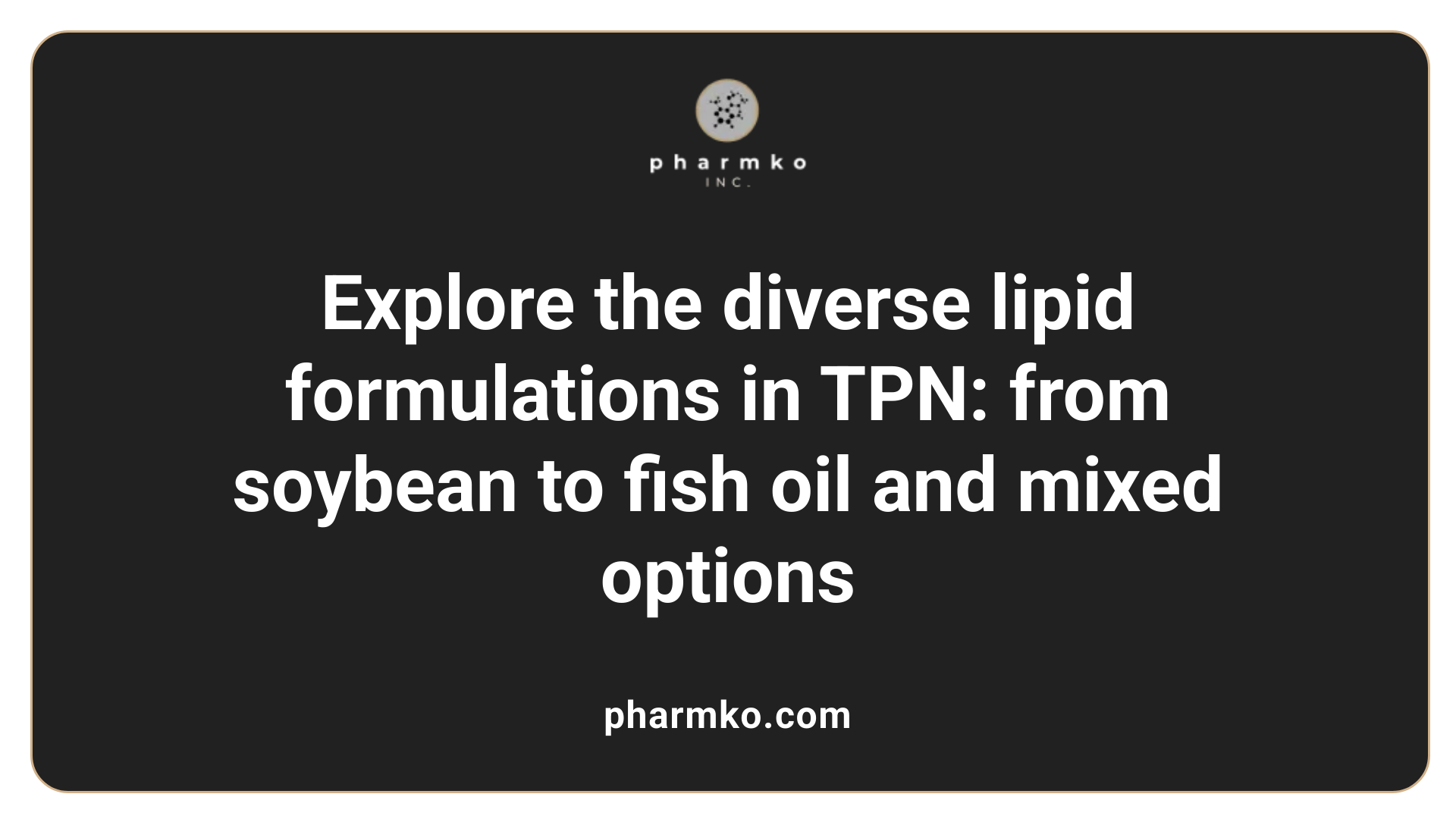
What are the different types of lipid solutions used in total parenteral nutrition (TPN)?
In TPN, the main goal is to provide essential fatty acids and sufficient calories to patients unable to meet their nutritional needs through oral or enteral routes. Traditionally, soybean oil-based intravenous (IV) fat emulsions have been the primary choice. These emulsions are rich in omega-6 polyunsaturated fatty acids (PUFAs), which can promote inflammation when administered in high amounts.
However, advances in nutritional science have led to the development of alternative lipid formulations. These newer options are designed to modify the fatty acid profile, aiming to reduce inflammation and adverse effects associated with soybean oil emulsions. Some of these alternative solutions include:
- Olive oil-based lipids, which are high in monounsaturated fats and support immune function.
- Safflower oil-based emulsions, which have different omega-6 fatty acid content.
- Fish oil-based emulsions, rich in omega-3 fatty acids such as EPA and DHA, known for their anti-inflammatory properties.
- Mixed oil emulsions like SMOFlipid that combine soybean oil, medium-chain triglycerides (MCT), olive oil, and fish oil.
These formulations offer options tailored to various clinical needs, aiming to improve outcomes by balancing inflammation, immune response, and liver health. Ongoing research continues to evaluate their specific benefits and optimal use in different patient populations.
Why Are Fat Emulsions Critical in TPN?
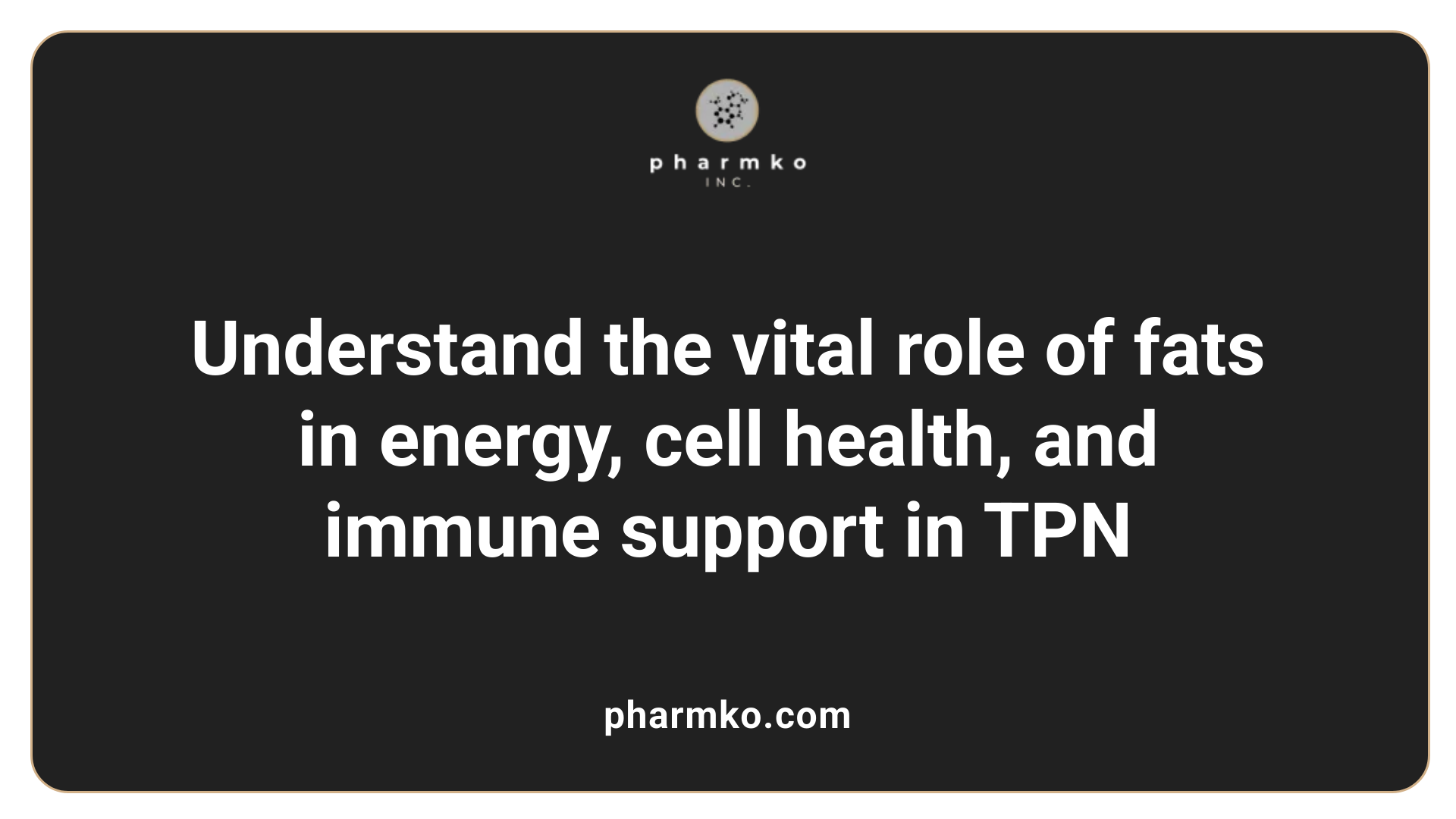
Why are fat emulsions given with TPN?
Fat emulsions play an essential role when administering total parenteral nutrition (TPN). They are primarily used to supply vital essential fatty acids (EFAs), such as linoleic acid and alpha-linolenic acid, which the body cannot produce on its own. Without these fats, patients risk developing deficiencies that can impair skin integrity, immune function, and neurological health.
In addition to essential fatty acids, lipids contribute a dense source of calories, providing approximately 9 calories per gram. This helps meet the high energy demands of patients unable to consume or absorb nutrients orally or via enteral feeding. Incorporating fats in TPN optimizes caloric intake, preventing weight loss and muscle wasting.
Beyond energy provision, fats support the stability and function of cell membranes, especially in rapidly dividing cells. They also facilitate the absorption of fat-soluble vitamins such as A, D, E, and K, which are crucial for immune response, bone health, antioxidation, and coagulation.
The type of fat emulsion used is significant because different sources have different biological effects. Traditional soybean oil–based emulsions are high in omega-6 polyunsaturated fatty acids (PUFAs), which can promote inflammation. Alternatively, fish oil–based emulsions, rich in omega-3 fatty acids like EPA and DHA, may modulate inflammation positively and improve clinical outcomes.
Medical supervision is necessary during lipid infusion to ensure safety. Monitoring helps detect adverse effects such as allergic reactions, hypertriglyceridemia, fat overload syndrome, and metabolic imbalances. Adjusting the lipid type and dose based on patient-specific factors can improve both safety and nutritional efficacy.
Overall, fats in TPN meet multiple physiological needs—serving as a vital nutrient, supporting cell and organ health, and potentially influencing inflammation and immune response.
What is the future outlook for lipid emulsions in TPN?
Ongoing research continues to explore the most effective lipid formulations. Studies compare soybean oil–based emulsions with newer options like olive oil or fish oil to determine which offer the best outcomes in reducing inflammation and supporting recovery. As research progresses, tailored lipid strategies will likely become standard, enhancing personalized nutrition care for patients.
Summary Table of Lipid Emulsions in TPN:
| Type of Lipid Emulsion | Composition | Clinical Implication | Notes |
|---|---|---|---|
| Soybean Oil (SO) | High omega-6 PUFAs | Pro-inflammatory, associated with cholestasis | Most traditional; risk of inflammation |
| Fish Oil (FO) | Rich in omega-3 EPA and DHA | Modulates inflammation, may reduce ICU stay | Potential to reverse PN-associated liver disease |
| Olive Oil-based | Monounsaturated fats (MUFA) | Supports immune function, less inflammation | Well tolerated, reduces oxidation |
| Mixed formulations (e.g., SMOFlipid) | Combination of oils (soy, olive, fish, MCT) | Reduce inflammation, improve antioxidant profile | Emerging options with promising benefits |
The optimal formulation depends on individual patient needs, clinical context, and ongoing research findings.
Guidelines for Lipid Intake in Parenteral Nutrition
What are the guidelines for lipid intake in parenteral nutrition?
For hospitalized patients receiving parenteral nutrition (PN), the typical recommended dose of lipids is up to 1.5 grams per kilogram of body weight daily. This amount provides essential fats needed for energy and metabolic functions without excess that could lead to complications.
It is critical to balance lipid dosing to support essential fatty acid needs while avoiding adverse effects such as hypertriglyceridemia, immune suppression, or liver issues. To prevent essential fatty acid deficiency (EFAD), a minimum of 2-4% of total calories should come from intravenous lipid emulsions (ILE). This ensures adequate supply of essential fatty acids like linoleic acid and alpha-linolenic acid.
In addition, considerations include using different types of lipid emulsions, such as soybean-based, olive oil-based, or fish oil–based fats, depending on the patient’s clinical condition. Fish oil-rich emulsions are particularly beneficial for modulating inflammation and reducing liver damage, especially in long-term PN cases.
Monitoring triglyceride levels and liver function tests is vital to optimize lipid dosing, prevent complications, and tailor the lipid formulation to individual needs. Emerging evidence supports the reduction of soybean oil–based emulsions in favor of alternatives like fish oil, which may improve clinical outcomes.
Overall, clinical guidelines advocate for a careful, individualized approach to lipid administration in PN, emphasizing sufficient essential fatty acids, minimizing pro-inflammatory effects, and reducing the risk of liver steatosis or cholestasis.
Common Complications Linked to TPN
What are common complications associated with TPN?
Total Parenteral Nutrition (TPN) is a vital nutritional intervention for patients unable to eat or absorb nutrients through the gastrointestinal tract. However, it is not without risks. Among the most notable are infections related to catheter use. These bloodstream infections, often caused by bacteria entering through central venous catheters, can lead to serious conditions like bloodstream infections or central line-associated bloodstream infections (CLABSIs).
Metabolic disturbances are also frequent. Patients receiving TPN may experience hyperglycemia, especially if glucose infusion rates exceed their metabolic capacity. Electrolyte imbalances, such as hypokalemia or hypophosphatemia, can occur due to improper management or underlying illnesses. Refeeding syndrome, a potentially lethal complication, results from rapid reintroduction of nutrition to malnourished patients, leading to electrolyte shifts and fluid overload.
Long-term use of TPN can cause liver-related issues. Cholestasis, fatty liver, and fibrosis are common hepatic complications that may develop after prolonged therapy. These conditions, collectively referred to as TPN-associated liver disease (PNALD), can progress to cirrhosis if not appropriately managed.
Venous complications are also prevalent, especially with extended duration of therapy. Thrombosis, occlusion, or sclerosis of the venous access sites can impair future access and complicate treatment plans.
Lastly, there are rarer but concerning issues such as manganese toxicity, which can induce neurotoxicity, and gallbladder problems, including cholecystitis (gall bladder inflammation) or gallstones, possibly linked to altered bile flow or the components of lipid emulsions used.
Overall, close monitoring and preventive strategies are crucial to reduce these risks, ensuring safer TPN administration and minimizing patient morbidity.
The Biological Significance of Lipids in TPN
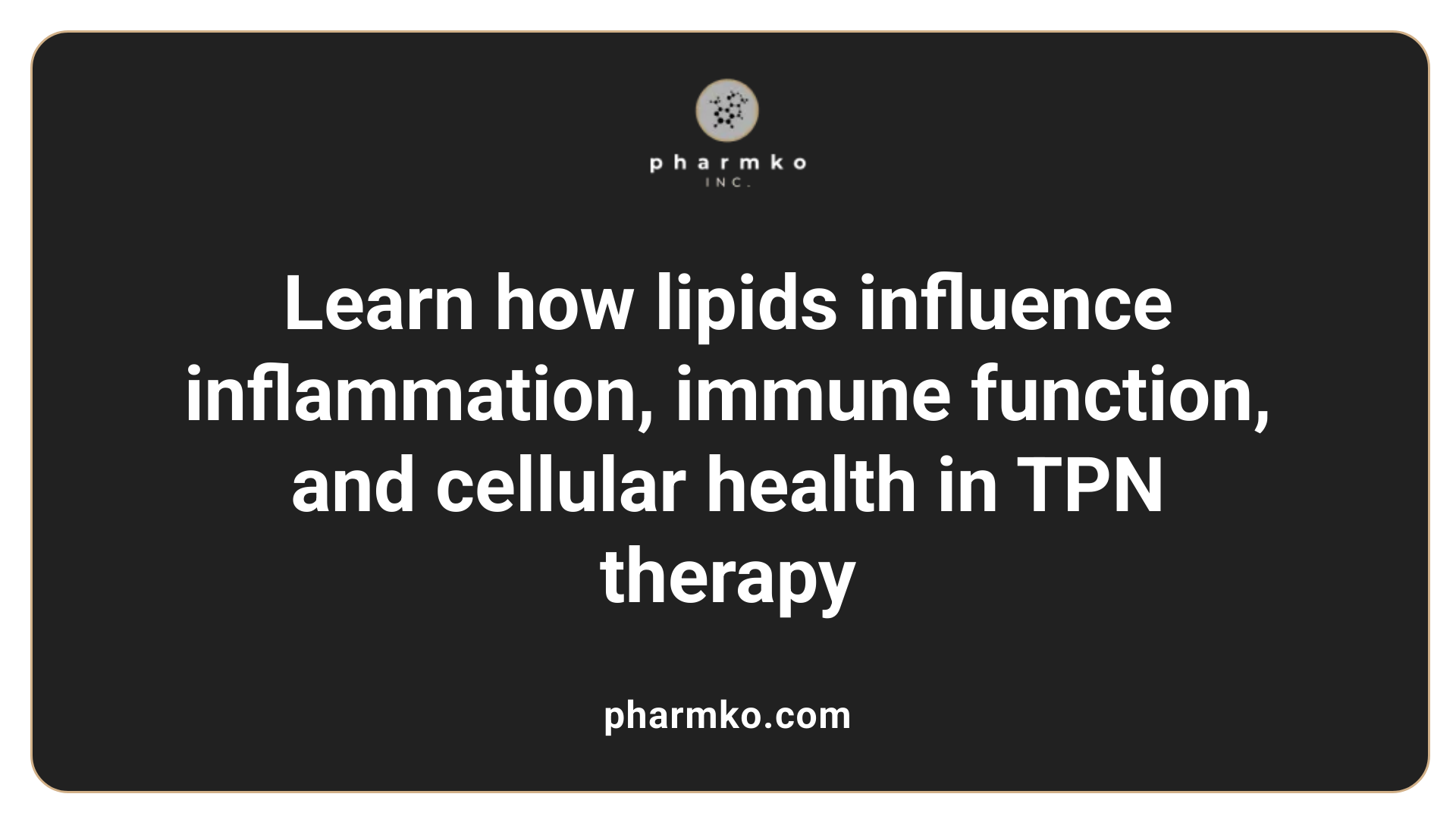
What is the significance of fat emulsions in TPN therapy?
Fat emulsions are a vital component of total parenteral nutrition (TPN), serving primarily as a source of energy and essential fatty acids. Beyond their caloric contribution, lipids are integral to maintaining cell membrane structure and function.
The composition of lipid emulsions influences multiple physiological processes, especially inflammation and immune responses. For instance, soybean oil-based emulsions rich in omega-6 fatty acids can promote inflammatory pathways, which may be undesirable in certain clinical situations.
Conversely, fish oil-based emulsions contain omega-3 fatty acids like EPA and DHA, which have anti-inflammatory properties. These can help modulate cytokine production, reduce inflammation, and potentially improve outcomes in critically ill or post-surgical patients.
Different formulations are tailored to meet specific patient needs. Olive oil-based emulsions, for example, support immune function and liver health, with a lower risk of causing oxidative damage. Mixed and alternative emulsions aim to balance these effects further.
Administering the right type and amount of lipids through careful infusion protocols is essential to minimize risks like hypertriglyceridemia, fat overload syndrome, or liver complications such as PN liver disease (PNALD). Emerging research continues to explore how optimizing lipid profiles can improve overall patient recovery, reduce inflammation, and support immune functions.
In summary, lipids in TPN do more than supply calories—they actively influence inflammation, immune responses, and cellular health, making their selection and management crucial for patient care.
Impact of Fatty Acid Composition on Clinical Outcomes
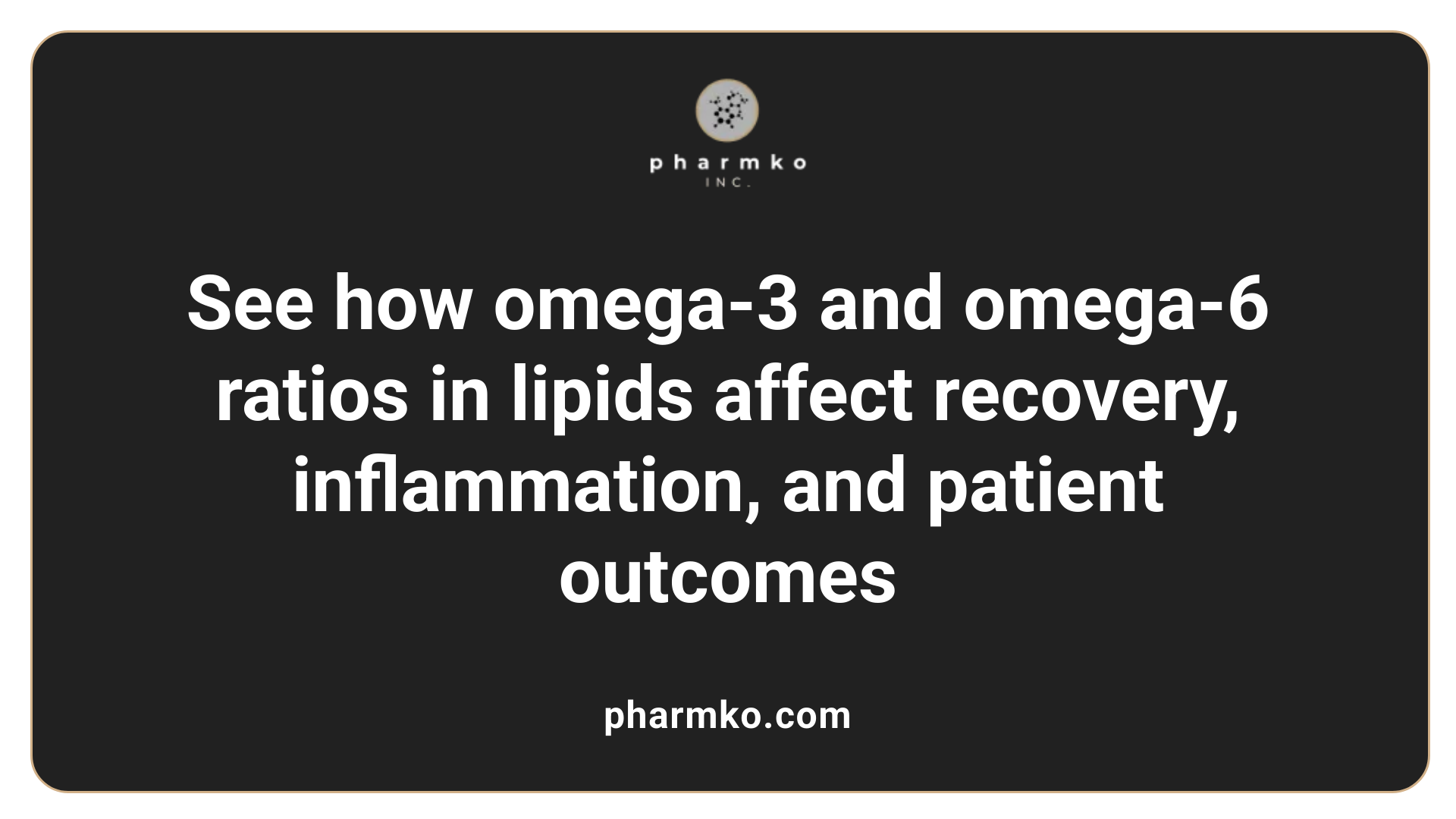
How does the fatty acid composition of lipid emulsions influence clinical outcomes?
The specific makeup of fatty acids in lipid emulsions used in parenteral nutrition can greatly affect patient health and recovery. Central to this are the ratios and types of fatty acids—particularly omega-6 and omega-3 polyunsaturated fatty acids (PUFAs).
Lipid emulsions high in omega-6 PUFAs, such as those derived from soybean oil, are known to be pro-inflammatory. These fats promote inflammatory responses, which may worsen outcomes in critically ill patients, lead to complications like cholestasis, and affect immune function negatively.
In contrast, emulsions enriched with omega-3 fatty acids like EPA and DHA, predominantly found in fish oil, have properties that counteract inflammation. These long-chain PUFAs are important biologically; they help maintain cell membrane fluidity, generate anti-inflammatory mediators, and serve as structural components of the brain, retina, and other tissues.
Clinical studies suggest that using fish oil–based emulsions can reduce cytokine production, modulate immune responses, and potentially improve recovery paths in surgical and critically ill patients. For example, they can lower the length of ICU stays, decrease infection rates, and support quicker liver function normalization.
The balance between omega-6 and omega-3 fatty acids in lipid emulsions is therefore crucial. A lower omega-6 to omega-3 ratio tends to favor anti-inflammatory effects, reducing the risk of inflammation-related complications.
Other long-chain PUFAs like EPA and DHA, moreover, contribute to membrane integrity and are essential in anti-inflammatory pathways, making their inclusion in lipid emulsions a promising strategy to optimize outcomes.
Overall, tailoring the fatty acid profile of lipid emulsions based on individual patient needs, emphasizing omega-3 inclusion, and reducing omega-6 content can lead to better clinical results, especially in reducing inflammation and supporting immune health.
| fatty acid type | common sources | effects on inflammation | clinical implications |
|---|---|---|---|
| Omega-6 (n−6) | Soybean oil, safflower oil | Pro-inflammatory | May increase risk of complications like cholestasis |
| Omega-3 (n−3) | Fish oil (EPA and DHA) | Anti-inflammatory | Associated with reduced cytokines, infection risk, and shorter hospital stays |
| Medium-chain fats | Coconut oil (MCT) | Energy source, less inflammatory | Used to modify fat profiles for better tolerance |
Understanding and applying knowledge about fatty acid composition in lipid emulsions can influence clinical decisions and improve patient care in nutritional management.
Advancements in Lipid Emulsions: Fish Oil and Others

What are the benefits of fish oil, specifically EPA and DHA?
Recent research highlights the positive role of fish oil in parenteral nutrition (PN). Fish oil-rich emulsions contain omega-3 fatty acids like EPA and DHA, which help in modulating the immune response and reducing inflammation. These fatty acids are natural precursors for anti-inflammatory mediators, and their inclusion in lipid emulsions has been shown to reduce cytokine production, potentially benefiting patients post-surgery or in critical illness.
How are mixed oil formulations like SMOFlipid contributing?
Mixed formulations such as SMOFlipid incorporate various oils, including soybean, olive, safflower, and fish oils. This combination aims to balance fatty acid profiles, offering the advantages of different oil sources. Studies suggest that SMOFlipid can decrease markers of inflammation, enhance antioxidant capacity, and lower the risk of PN-associated liver disease, providing a more comprehensive approach to lipid supplementation.
What is the role of olive oil-based emulsions and structured triglycerides?
Olive oil-based lipid emulsions, rich in monounsaturated fats, are being evaluated for their supportive effects on immune function and liver health. These emulsions may help reduce oxidation damage and support cellular integrity. Structured triglycerides, which involve specific arrangements of fatty acids, are also under investigation for their potential to optimize fat utilization and metabolic outcomes.
What are the latest research findings related to lipid emulsions in TPN?
Recent studies emphasize the importance of tailoring lipid profiles to improve patient outcomes. The inclusion of fish oil and mixed formulations like SMOFlipid has been associated with shorter hospital stays, fewer infection complications, and improved liver function parameters. These advancements suggest a shift towards more personalized and inflammation-modulating lipid therapies.
| Lipid Type | Composition | Clinical Impact | Notable Notes |
|---|---|---|---|
| Fish Oil (EPA, DHA) | Rich in omega-3 fatty acids | Reduce inflammation, modulate immune response | Used post-surgery, in critical illness |
| SMOFlipid | Soybean, olive, safflower, fish oils | Decrease inflammation, support liver health | Decreases inflammatory markers |
| Olive Oil-Based Emulsions | Monounsaturated fats | Support immune response, reduce oxidation | Well tolerated, support oxidative stability |
| Structured Triglycerides | Specific fatty acid arrangements | Potential metabolic benefits | Undergoing clinical trials |
These innovations in lipid emulsions aim to provide safer, more effective nutritional support, especially for critically ill or long-term PN patients. Ongoing research continues to refine our understanding, promising better tailored therapies in the future.
Antioxidants and Safety Measures in Lipid Emulsions
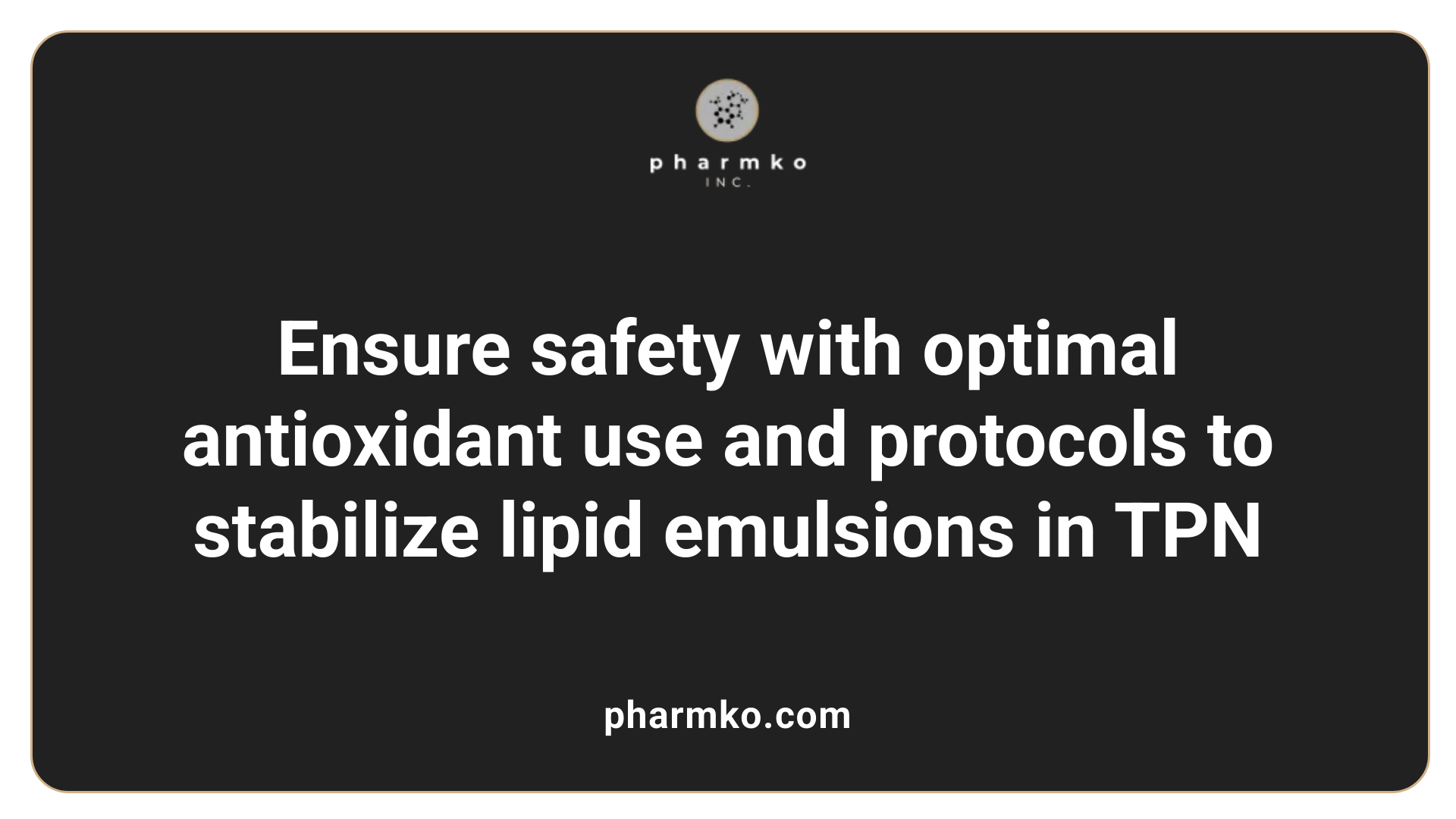
How can lipid emulsions be optimized for safety and stability?
To enhance the safety and stability of lipid emulsions used in parenteral nutrition (PN), health care providers incorporate antioxidants like vitamin E, specifically α-tocopherol. This vitamin acts as a potent antioxidant, reducing lipid peroxidation—an oxidative process that can damage cell membranes and compromise the emulsion's stability.
In addition to antioxidants, components such as phytosterols are present in some lipid formulations. While phytosterols can support cellular functions, their accumulation has been associated with adverse effects such as liver dysfunction and cholestasis, especially in long-term PN. Careful formulation and monitoring are essential to prevent unwanted buildup and toxicity.
Stability of lipid emulsions depends significantly on infusion protocols and the composition of the solution. Proper control of electrolytes, pH, and interactions with medications is crucial. Infusions should generally not exceed 24 hours in length for 3-in-1 PN solutions, reducing the risk of microbial growth and instability.
Clinicians should also vigilantly monitor patients for symptoms of destabilization or incompatibility, such as precipitation or changes in appearance of the emulsion. Maintaining aseptic techniques during preparation and administration further ensures safety.
Overall, optimizing lipid emulsion formulations with antioxidants, preventing accumulation of harmful additives, and strictly adhering to recommended infusion protocols help maximize therapeutic benefits while minimizing risks.
Monitored Adjustments and Personalization in Lipid Strategies
How should lipid emulsion formulations be personalized and monitored?
Personalizing lipid emulsion formulations in parenteral nutrition involves carefully selecting the type and amount of fats to meet each patient's unique needs. Since different lipid sources have distinct effects on inflammation, immunity, and liver health, tailoring these emulsions can improve outcomes.
Monitoring plays a vital role in this process. Regular assessment of essential fatty acid (EFA) levels such as alpha-linolenic acid (ALA), linoleic acid (LA), eicosapentaenoic acid (EPA), docosapentaenoic acid (DPA), docosahexaenoic acid (DHA), and arachidonic acid (ARA) is crucial. These measurements help prevent essential fatty acid deficiency (EFAD), which can occur with long-term parenteral nutrition.
Adjustments are based on clinical responses, lipid laboratory results, and specific health conditions. For example, in patients with inflammatory issues or at risk for PN-associated liver disease, fish oil–based emulsions rich in omega-3 fatty acids may be favored to modulate inflammation.
A thorough understanding of each patient's metabolic response guides dose modifications. For instance, reducing lipid doses from the standard 3 g/kg/day to around 1 g/kg/day may lessen risks like cholestasis while maintaining essential fatty acid supply.
Various lipid formulations, including soybean oil–based, olive oil–based, and mixed oil emulsions like SMOFlipid, can be tailored. Such customization can support immune function, reduce oxidative stress, and prevent complications like lipid overload or liver injury.
In summary, effective lipid management in PN requires ongoing monitoring of fatty acid levels, thoughtful dose adjustments, and selecting appropriate emulsions aligned with individual patient needs and clinical goals.
Clinical Outcomes and Evidence Supporting Lipid Optimization
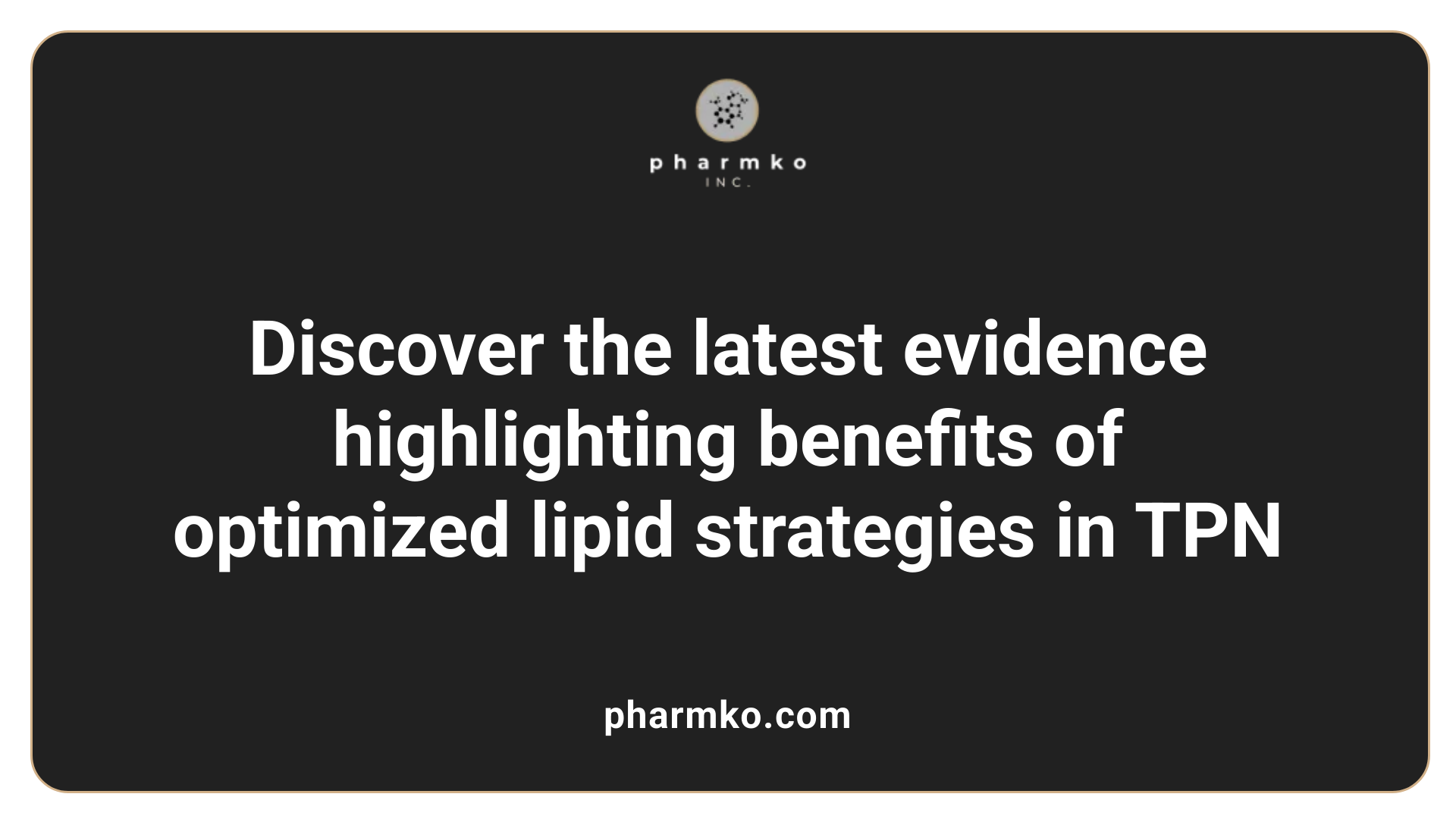
What is the evidence supporting the optimization of lipid emulsions in TPN?
Research indicates that tailoring lipid emulsions within total parenteral nutrition (TPN) can significantly influence patient outcomes. Clinical trials have shown that using mixed or fish oil-based lipid formulations often results in shorter hospital stays. For example, replacing traditional soybean oil–based emulsions with products like 4-OLE has been linked to decreased levels of bilirubin and triglycerides, suggesting improved liver health and metabolic function.
Additionally, alternative emulsions containing fish oil, which are rich in omega-3 fatty acids such as EPA and DHA, have demonstrated potential in lowering inflammation and reducing infectious complications. Meta-analyses of multiple trials highlight that omega-6 fatty acid–reducing strategies can lead to better clinical results, including fewer infections and reduced ICU length of stay.
However, while these findings are promising, researchers emphasize the need for further well-powered studies to firmly establish long-term benefits and optimal formulations. Overall, current evidence supports the ongoing effort to optimize lipid content in TPN, aiming to enhance patient recovery and reduce complications.
Implementing Best Practices for Lipid Emulsion Administration
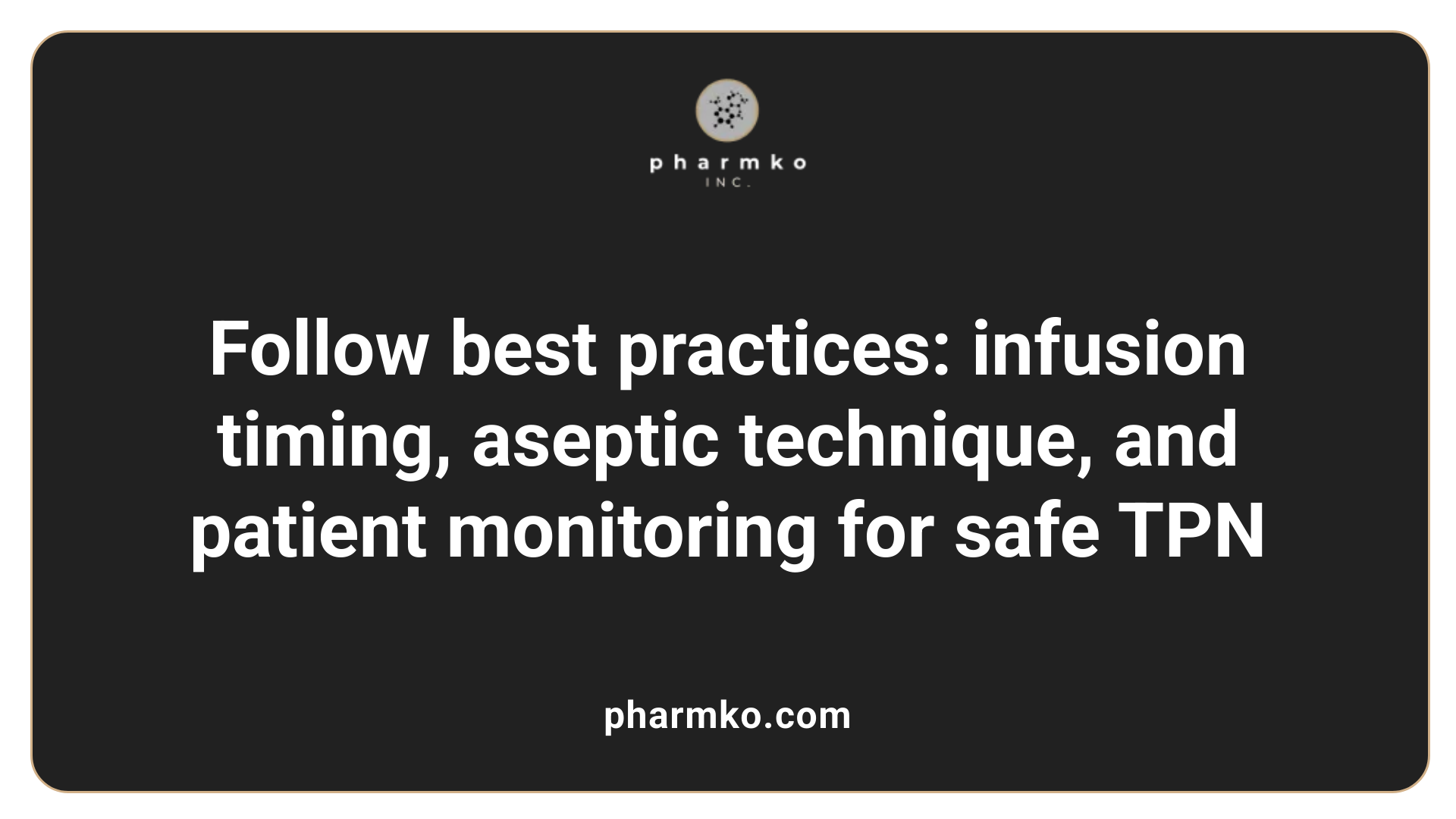
Infusion protocols and duration limits
To ensure safety and efficacy, lipid emulsions in parenteral nutrition (PN) should be administered within specified time frames. For three-in-one (3-in-1) PN solutions, the recommended maximum duration is 24 hours. When lipid emulsions are given separately, the duration is typically limited to 12 hours. These time limits help prevent microbial growth and maintain emulsion stability.
Risks of microbial growth, especially in 3-in-1 solutions
Lipid emulsions are susceptible to microbial contamination if stored longer than recommended. Extended infusion times increase the risk of bacterial and fungal proliferation, which can lead to serious infections. Proper handling, storage, and adherence to infusion duration guidelines are essential to minimize this risk.
Guidance for safe administration
Administering lipid emulsions safely involves several key considerations. Proper aseptic techniques during preparation and infusion are critical. Compatibility with other PN components should be verified to prevent destabilization of the emulsion, which can be caused by interactions with electrolytes or certain medications. Healthcare providers must monitor patients closely for signs of fat overload syndrome, such as hypertriglyceridemia, hepatomegaly, or altered organ function.
Technical considerations for administering fat emulsions in TPN
Careful attention to infusion protocols is vital. Administering the correct dose within the designated timeframe reduces infection risk and maintains emulsion stability. Using dedicated infusion sets and aseptic procedures helps prevent contamination. Monitoring blood triglyceride levels and inflammatory markers can provide early warning signs of adverse effects. Adjustments to the lipid dose or infusion duration should be made based on patient response.
In summary, safe and effective lipid emulsion administration hinges on strict adherence to infusion duration limits, proper handling techniques, compatibility checks, and vigilant patient monitoring. These practices are vital in optimizing nutritional support while minimizing complications.
Future Directions and Research Needs

What are the future directions for research in lipid emulsions in TPN?
Ongoing studies aim to deepen our understanding of the optimal lipid formulations in total parenteral nutrition (TPN). A primary focus is conducting large-scale, well-designed clinical trials to confirm the benefits of fish oil–based emulsions, which contain omega-3 fatty acids known for their anti-inflammatory properties. Researchers are exploring how these emulsions influence recovery, immune function, and liver health across various patient groups.
Development of new lipid formulations is a major area of interest. Innovations may involve creating structured triglycerides or bioengineered lipids that better modulate inflammation, enhance immune responses, and prevent complications such as PN-associated liver disease. Such formulations could be tailored to specific clinical needs, potentially improving outcomes for critically ill, postoperative, and long-term PN patients.
Personalized medicine approaches are also being explored. By considering individual genetic, metabolic, and inflammatory profiles, clinicians could customize lipid therapy to enhance efficacy and reduce adverse effects. This might include adjusting the omega-6 to omega-3 ratio or incorporating antioxidants and other protective agents.
Overall, future research in lipid emulsions is poised to deliver more effective, targeted nutritional strategies. The goal is to optimize clinical benefits, reduce inflammation, and improve long-term health outcomes for patients dependent on parenteral nutrition.
| Future Research Focus | Description | Additional Notes |
|---|---|---|
| Clinical Trials | Validation of fish oil and new emulsions | Especially across various patient groups |
| Novel Lipid Formulations | Development of structured triglycerides and bioengineered lipids | To reduce inflammation and improve immunity |
| Personalized Therapy | Tailoring lipid profiles based on individual genetic and metabolic data | Enhancing response and minimizing risks |
In conclusion, advancing lipid emulsion research offers promising pathways to better clinical management of parenteral nutrition, promoting healthier outcomes and reducing complications.
Summary and Clinical Implications
Optimal formulation and careful management of lipid emulsions in TPN are vital to enhancing patient recovery, reducing complications, and advancing clinical outcomes. Incorporating diverse lipid sources such as fish oil, olive oil, and mixed emulsions, guided by emerging evidence and personalized monitoring, can significantly improve the safety and efficacy of nutritional therapy. Continued research and adherence to clinical guidelines will ensure that lipid strategies in TPN evolve to meet the complex needs of diverse patient populations.
References
- Improving Outcomes with Parenteral Nutrition - PMC
- Composition and Functionality of Lipid Emulsions in ...
- Lipids in parenteral nutrition – expert consensus statements
- Intravenous Lipid Emulsions Management Clinical Pathway
- TPN and Lipids: Nourishing the Body Beyond Energy
- Lipid Use in Hospitalized Adults Requiring Parenteral Nutrition
- Immune modulation by parenteral lipid emulsions
- The Hitchhiker's Guide to Parenteral Nutrition Management ...



